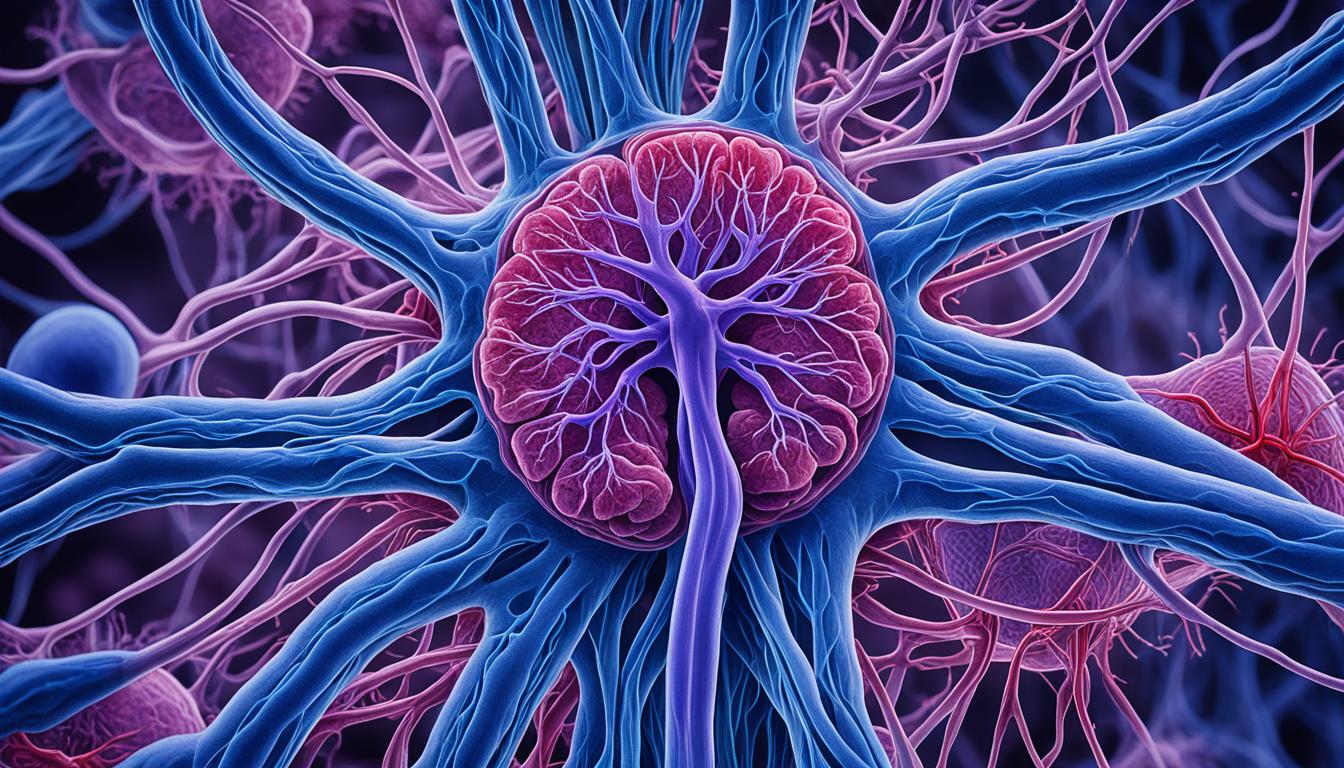Chronic kidney disease (CKD) is a serious issue becoming more common, especially among older adults. Causes include obesity, diabetes, and high blood pressure. It’s estimated that CKD will be the fifth leading cause of death by 2040.
CKD increases the risk of kidney failure, heart problems, and early death. Even with current treatments, the risks remain high. This leads to a heavy medical and financial burden for patients.
Scientists are working on new ways to treat CKD. They focus on kidney fibrosis, aiming to better understand and find new treatments.
Mesenchymal stem cells (MSCs) look promising for treating kidney diseases. They have special abilities that could help. But, there are challenges like the risk of forming tumors and the body’s defense against them. Using parts of these cells called exosomes might avoid these issues.
With these new approaches in research, there is hope for CKD patients. Researchers are looking for ways that could help heal the kidney tissue.
Key Takeaways:
- CKD is a life-threatening disease that is on the rise due to factors like obesity, diabetes, and hypertension.
- It is associated with an increased risk of kidney failure, cardiovascular disease, and premature death.
- Researchers are exploring new treatment approaches to improve outcomes for CKD patients.
- Mesenchymal stem cells (MSCs) show promise in kidney disease treatment.
- Extracellular vesicles, particularly exosomes, may offer an alternative therapy for CKD.
Causes, Symptoms, and Stages of CKD
Chronic kidney disease (CKD) gets worse over time. It causes a slow loss of kidney function. The top causes are diabetes and high blood pressure. These can harm the kidney’s tiny blood vessels.
There are many other things that can lead to CKD. These include infections, kidney swelling, body structure problems, and more. Even things like certain medications, kidney blockages, and lifestyle choices can be a factor.
CKD might not show symptoms in the beginning. But, as it moves to later stages, people may feel tired or see their ankles swell. They might also have trouble with their urine or feel itchy. Other symptoms could be nausea, breathing problems, or not feeling hungry.
Doctors split CKD into five stages to see how badly the kidneys are working. This is based on the glomerular filtration rate (GFR). The stages go from mild kidney damage in stage 1 with normal kidney function, to needing dialysis or a new kidney by stage 5.
Treating CKD tries to slow the disease down and make people feel better. This includes changes in diet, regular exercise, and no smoking. Controlling things like high blood pressure or managing diabetes is key. In some cases, taking certain medicines might help. But, if the disease is very advanced, a kidney transplant could be the best step to take.
| CKD Stage | Description |
|---|---|
| Stage 1 | Mild kidney damage with normal or high GFR |
| Stage 2 | Mild decrease in GFR |
| Stage 3 | Moderate decrease in GFR |
| Stage 4 | Severe decrease in GFR |
| Stage 5 (ESRD) | Kidney failure; dialysis or transplant needed |
Knowing the basics about CKD is crucial. This helps with early diagnosis and treatment. Keeping up with check-ups and leading a healthy life can make a big difference. It can really improve how well someone lives with CKD.
Stem Cell Therapy for CKD
Stem cell therapy is becoming a key approach in treating Chronic Kidney Disease (CKD) by controlling its advance and repairing kidney damage. Mesenchymal stem cells (MSCs) stand out due to their many healing traits. These include helping the immune system, reducing scar tissue formation, fighting inflammation and oxidative stress, stopping cell death, and supporting new blood vessel growth.
MSCs come from different parts of the body and have shown positive outcomes in tests and real cases of kidney problems. For example, when umbilical cord MSCs were used, they improved issues like lupus kidney damage. They help with kidney work and lessen harm to certain kidney cells.
But there are some hurdles to overcome. These include the risk of cancer, passing on pathogens, and ensuring a steady cell supply.
An exciting new focus is on special tiny packages from the cells, called exosomes. These exosomes have a lot of the same healing powers as MSCs. They could be a game-changer not just in treatment but also in spotting kidney issues early and predicting their course. However, we still need more studies to grasp how exosomes work and make the most of stem cell treatments for CKD. This could bring new hope for those with the disease.

